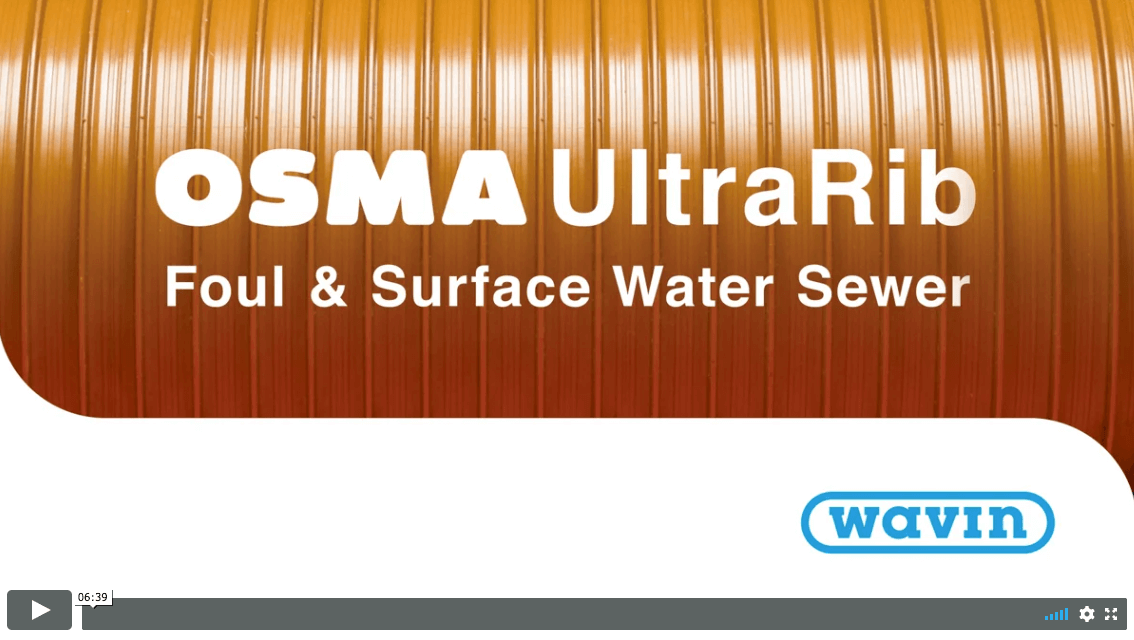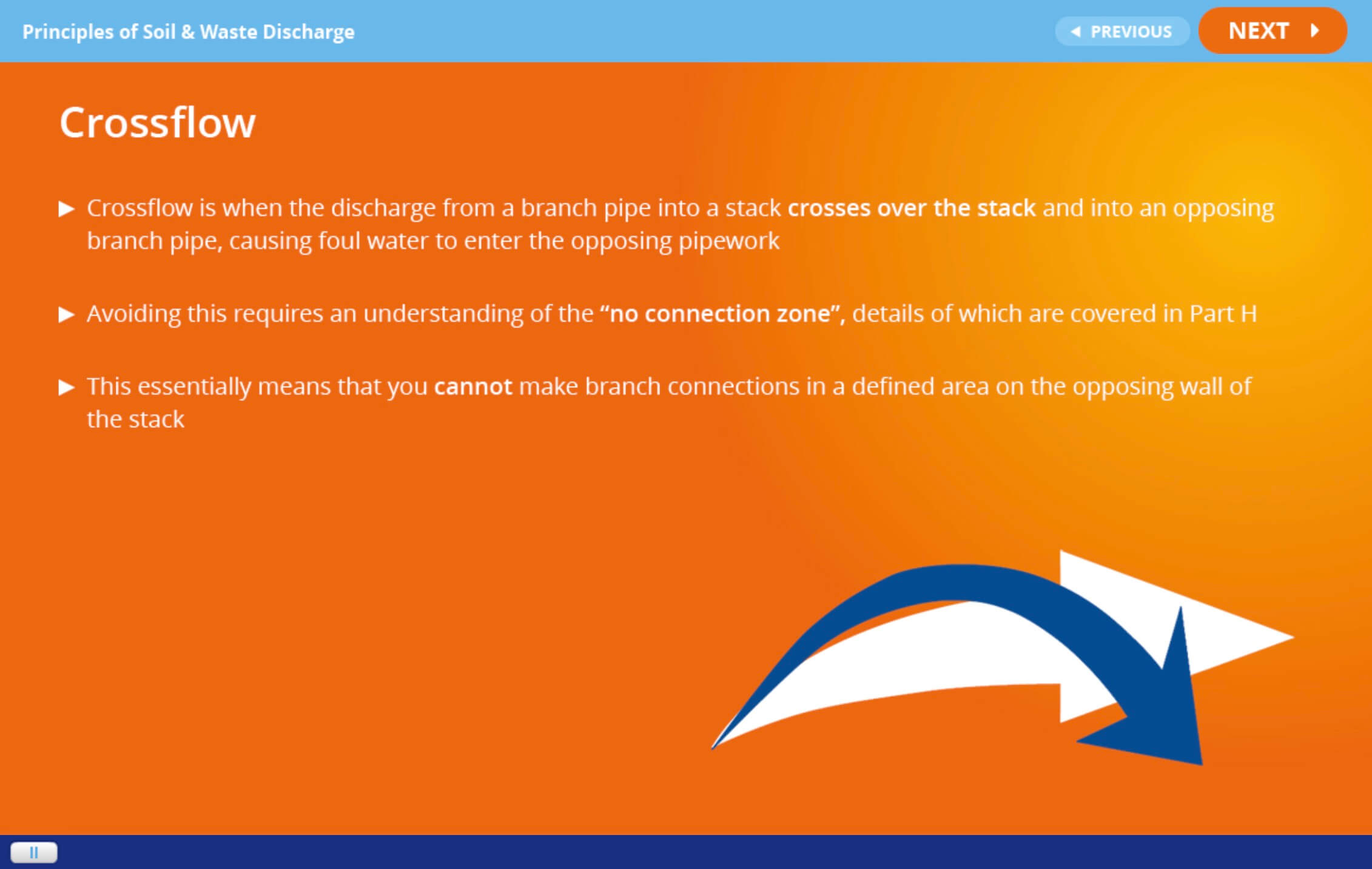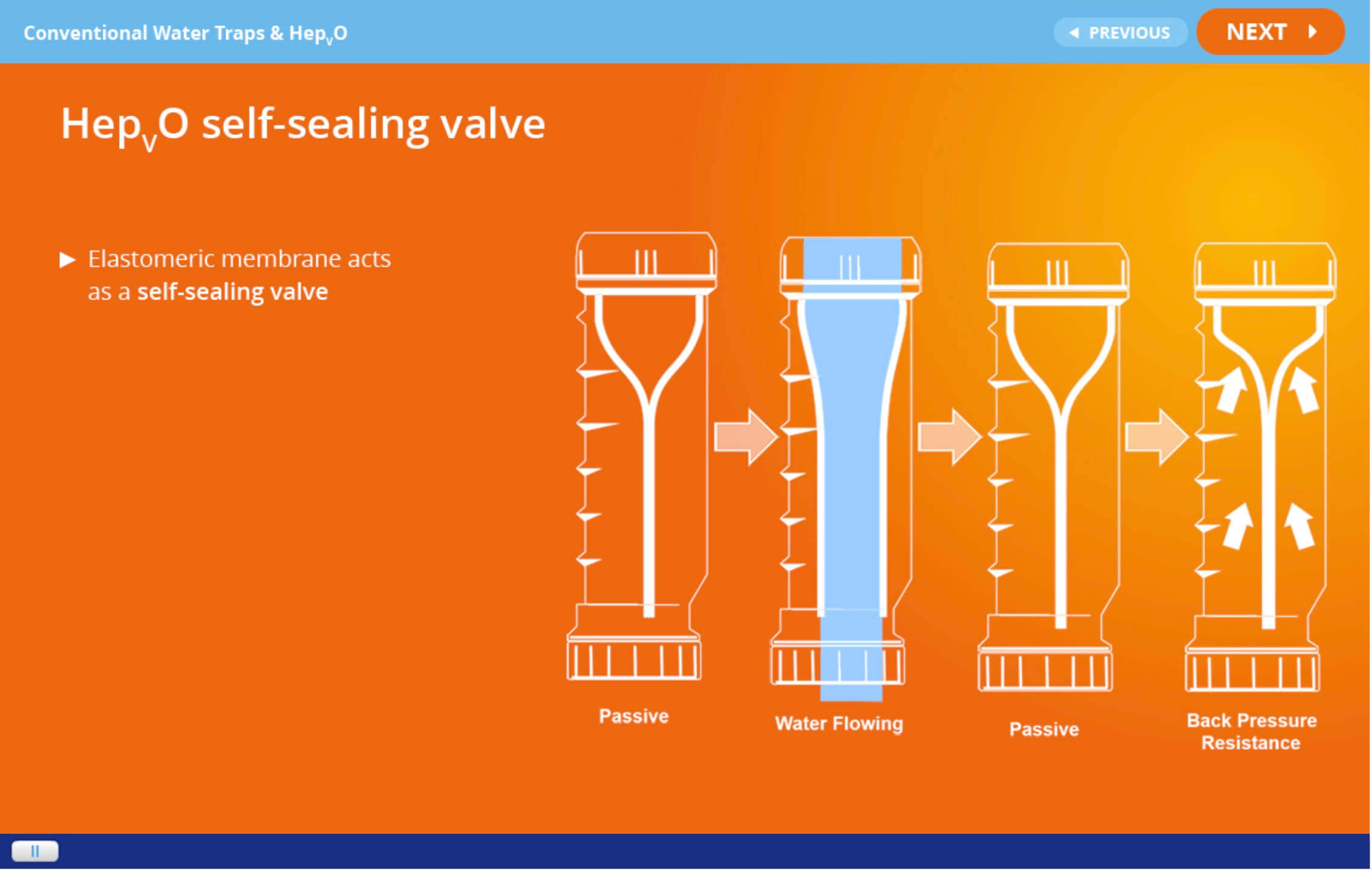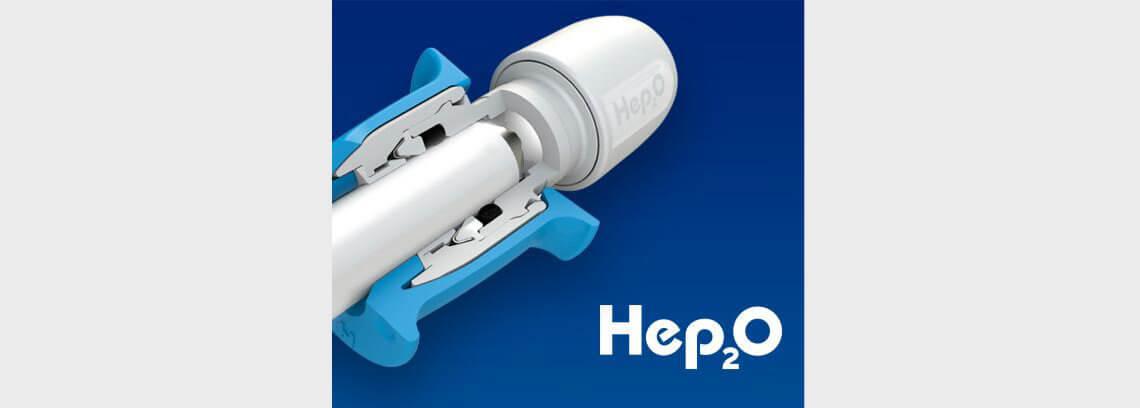Managing noise in a soil and waste project
| 15 Minutes |

Preview
Managing noise in a soil and waste project
Introduction
This short CPD course looks at the issue of noise generated from soil and waste installations, looking at its causes, its effects and how it can be controlled and reduced through considered design and the correct product specification.
Chapters
Chapter 1
Chapter one introduces the topic of noise and its impacts.
Chapter 2
Chapter two covers the causes and accepted levels of noise, and the difference between airborne and structure borne sound.
Chapter 3
Chapter three deals with the common design challenges faced by designers and specifiers.
Chapter 4
And finally, chapter four explains why Wavin’s acoustic soil and waste systems have become, worldwide, the most installed low noise plastic system.
At the end of the course, you’ll find a short questionnaire to check your learning and complete your certificate.
Osma UltraRib Installation in Adoptable Applications
| 10 |

Preview

Osma UltraRib Installation in Adoptable Applications
Introduction
This informative e-learning module will take you through the steps required to install Osma UltraRib in adoptable applications whilst adhering to the latest regulations including the new Design Construction Guidance for England.
Chapters
Step 1: Storage & Handling
This chapter will take you through the best practices on site in regards to storing and handling Osma Ultrarib pipe and fittings ensuring you always follow site standard safety procedures.
Step 2: Excavation
Excavation should always be carried out in accordance with BS EN 1610, BS 8000 Part 14 and the Design Construction Guidance. This chapter will give advice on excavation, trench boxes and minimum trench widths for Osma UltraRib for both singular or multiple pipe installations.
Step 3: Bedding
Advice will be given on the type of aggregate used and the particle size depending on the pipe diameter. We will also look at the minimum bedding depths needed and how it should be compressed at each layer.
Step 4: Cutting, Jointing and Laying the Pipe
This chapter will look at how Osma UltraRib pipe should be cut, cleaned and joined together with a ringseal, as well as information regarding maximum pipe lengths in adoptable applications.
Step 5: Sidefill and Backfill
We will look at how to install the side and backfill with aggregate in layers for Osma UltraRib pipes followed by advice on the final backfill to bring the level up to the surface formation. We will also look at installing a concrete slab in adoptable situations where loading is expected and the cover is less than 1.2 metres.
Step 6: Cleaning and Testing
Information will be given at how cleaning and testing must be carried out in the pipe system for different areas of the UK according to different regulations.
Designing geocellular structures as part of a SuDs scheme
| 31 Minutes |

Preview
Designing geocellular structures as part of a SuDs scheme
Introduction
This concise e-learning module will provide with you the latest information on sustainable drainage systems (SuDS) in the current landscape. It will give you a greater understanding of when and how to incorporate geocellular structures into your SUDS designs, taking into account current guidance and industry best practice.
Chapters
Chapter 1
In this first chapter we will set the scene for the chapters to follow, we will revisit what SuDS are and, through their design, what engineers are seeking to achieve. We will also look at some examples of the design theory in practice.
Chapter 2
Next, we will look at a timeline from 2007 to the present day, tracking the history of SuDS implementation into the regulatory and planning framework. This will finish with more detail around the new Design Construction Guidance that came into force in England on 1st April 2020 as well as Schedule 3 in Wales.
Chapter 3
This chapter will look at the role of Geocellular structures in SUDS. Being lightweight and flexible in design and construction, and with high storage capabilities, they offer several advantages over ‘traditional’ heavy civils constructions.
Chapter 4
Chapter four covers some of the key considerations when designing Geocellular structures including any issues you may face. The current best practice guide for designing geocell tanks is CIRIA Guide C737.
Once you have completed the course you can take a short test, once passed this will then produce a certificate for you to download for your own files.
Osma Soil & Waste
| 20 Minutes |

Preview

Osma Soil & Waste
Introduction
This course provides an introduction to Wavin's Osma drainage products, covering:
- The principles of soil and waste
- Complying with Building Regulations
- Unique features of the Osma range
Chapters:
Chapter 1 - Introduction to Osma Soil and Waste
This intermediate level course will give an overview of the principles of soil and waste along with some of the unique features in the Osma range and how the building regulations apply. It will outline the basic anatomy of branch pipework and stacks.
Chapter 2 – Principles of soil and waste discharge
In this chapter you will find further information on the requirements for connection of soil and waste to below ground drainage including the ‘no connection zone’, the use of soil manifolds, condensate discharge and traps as set out by part H of the building regulations.
Chapter 3 – Installation
Find out about the jointing systems of the Osma soil and waste systems and their benefits. This chapter also outlines how to make a solvent welded, push-fit and ring seal joints and the requirement for branch ventilation. Finally you will find out about the full range of Osma soil and waste and the materials that they are made from.
Assessment
This interactive section will allow you to test your knowledge and understanding of the module. here are 10 questions in this section and we estimate that it will take about 10 minutes to complete.

Preview

HepvO self-sealing valve
Introduction
This course provides an introduction to Wavin's innovative waterless trap, HepvO, and covers:
- How HepvO works
- Where HepvO can be used
- How HepvO compares to conventional water traps
- Installation guidelines
Chapters:
Chapter 1 - Introduction to HepvO
HepvO is a self-sealing waterless waste valve. This chapter will introduce how the valve works, outline how it compares to conventional traps and explain the applications in which it is most beneficial.
Chapter 2 – conventional water traps and HepvO
This chapter takes a look at how traditional water traps work and how HepvO compares.
Chapter 3 – Installation and standards
This chapter will show you how HepvO should be installed and the key standards that apply.
Assessment
Complete these 10 questions to ensure your full understanding of the HepvO self sealing valve training.
Hep2O | Push-fit plumbing products
| 30 Minutes |

Hep2O | Push-fit plumbing products
Introduction
This course provides an overview of our Hep2O push-fit plumbing system and covers:
- How Hep2O works
- Our unique In4Sure joint recognition
- How Hep2O compares to copper pipe systems
This beginner level course will take about 30 minutes to complete and will show you how to install Hep2O as well as outlining its key features and benefits and showing how it compares to other products on the market.
Chapters:
Chapter 1 – What is Hep2O
This chapter covers the evolution of Hep2O, its installation and unique benefits to installers and home owners.
Chapter 2 – how Hep2O works
Chapter 2 covers some of the unique features of Hep2O including the unique iIn4Sure joint recognition and the HepKey. It also includes a comparison with copper and explains the compatibility of the two systems.
Assessment
We estimate that it will take just 5 minutes for you to complete this quick 10 question assessment to check knowledge and understanding of this module.